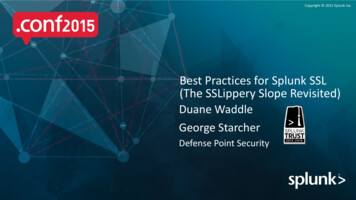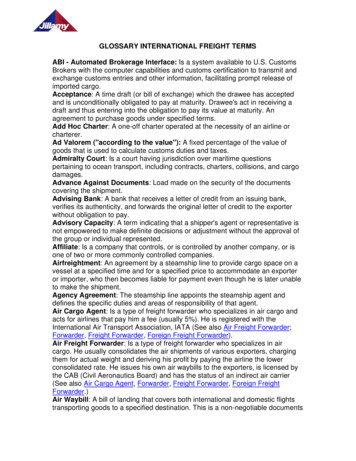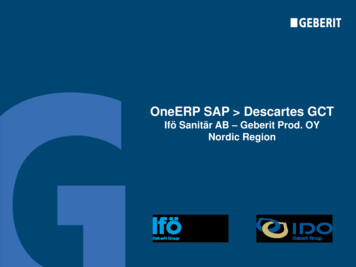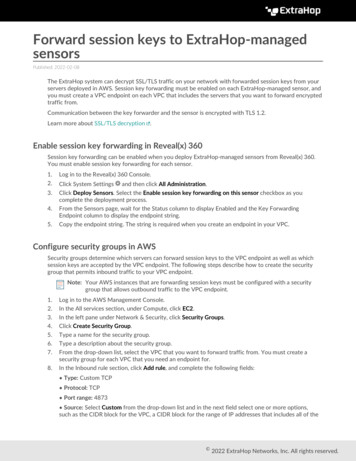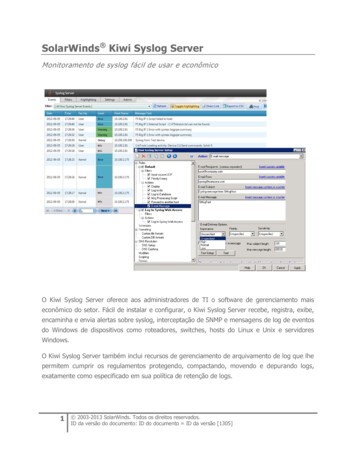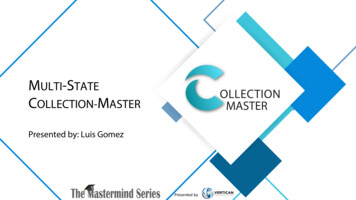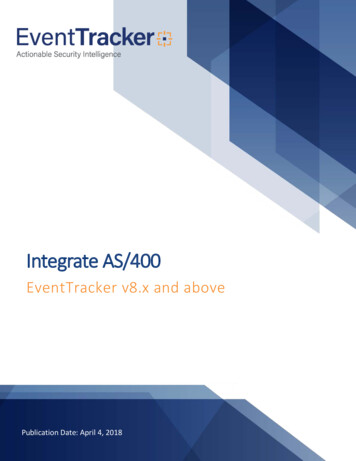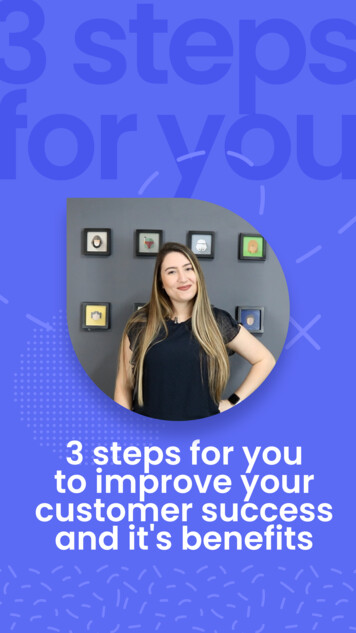
Transcription
3 stepsfor you3 steps for youto improve yourcustomer successand it's benefits
How to start buildingyour forwarder customersuccess journey mapMaintain thecustomer atthe center ofyour company123Map thebehavior ofeachinteractionMark eachinteractionmilestone4Identify howyour freightcustomerinteracts withyour company56Check whatcan beimprovedDescribe yourforwardercustomer7Flag points ofattention
The completeguide through allthe steps:
Step 1Maintain thecustomer at thecenter of yourcompanyPutting your forwarder customer at thecenter of your business meanslistening to what they have to say,understanding their pain, to try to offerthe best solution to their needs. Onceyou start thinking about how you canmake your customer’s lives easier andbetter your business will succeed, afterall, happy clients lead to more andmore deals.To help you out with this here is acomplete guide of how to becustomer-centric: click here to accessthe guide
Step 2Describe yourforwarder customerThis is the part where you will need tobuild your freight forwarder client’spersonas. Personas are fictional characters,created to represent the differenttypes of customers you have in yourcompany, they are made by thedemographics and psychographicfactors.So, you have to think about:Onewhataretheylike;Twohowtheywork;Threewho your clients are;
Step 2Describe yourforwarder se;theproblemstheyarelookingtoEightsolve, etc.what they like to do;The key here is to try to describe asbetter as you can the types of clientsyou have in your forwarding company.
Step 3Identify how yourfreight customerinteracts with yourcompanyList all of the possibilities that yourclients have of interacting with yourcompany, either Sixemail;Parnity.Three Sevensocialmedia;Fourwebsite;logistics networks;Start with a broad list of interactivepoints, and narrow it down to focus onthe ones most relevant to your freightcustomers’ journey.
Step 4Map the behavior ofeach interactionFor each interactive point, your freightforwarding customers have with yourcompany map the most commonbehaviors they have in eachtouchpoint. For example, let’s say thatmost of the forwarders that go to yourwebsite are new customers looking tomake a new business, along with thephone calls that are to understand alittle better about how your businesswork. Unlike emails that probably aremore common to receive once youalready have a relationship built.
Step 5Mark each interactionmilestoneThe same goes for the points ofinteractions your freight forwardercustomer has with your companyduring his journey. For each of theinteraction points, your customerexperience divides into three differentkey points as their thoughts, feelings,and actions. So you must ask yourself,what is your forwarder customerpotentially thinking at each point oftheir journey? What are their potentialemotional states? What possibleactions are they taking?
Step 5Mark each interactionmilestoneYour customer journey map willdescribe your freight forwardercustomer's possible experiences ineach of these areas. So, to provide asatisfying customer experience, workon identifying the ideal componentsthat your customer should experienceto achieve their goals.Simultaneously, you can define howthese experiences correspond to themilestones related to your forwarderbusiness goals.
Step 6Flag points ofattentionBy marking customer milestones, youcan also identify what can go wrong ateach stage of the customer journeyand what negative experiencecomponents may accompany each ofthese scenarios. For example, you canidentify spots in your sales processwhere your freight client mightbecome frustrated.As you do that, you create theopportunity to improve and developprocedures for responding to potentialevents that are potentially threateningto disrupt your freight forwardercustomer’s experience. And, as a result,you can minimize experiences thatreduce customer satisfaction.
Step 7Check what can beimprovedOne of the biggest benefits of mappingyour forwarder customer journey isthat you can use it to promoteoptimization of each of the stages ofthe customer journey. You can improveit by, for example, testing yourcustomer journey process or trackingtheir behavior with analytics tools.Another alternative is to ask them forfeedback.However, once you have madeadjustments, you need to monitor itcontinuously to verify that yourchanges represent genuineimprovements.
One of the biggest benefits of mapping your forwarder customer journey is that you can use it to promote optimization of each of the stages of the customer journey. You can improve it by, for example, testing your customer journey process or tracking their behavior with analytics tools. Another alternative is to ask them for feedback.
